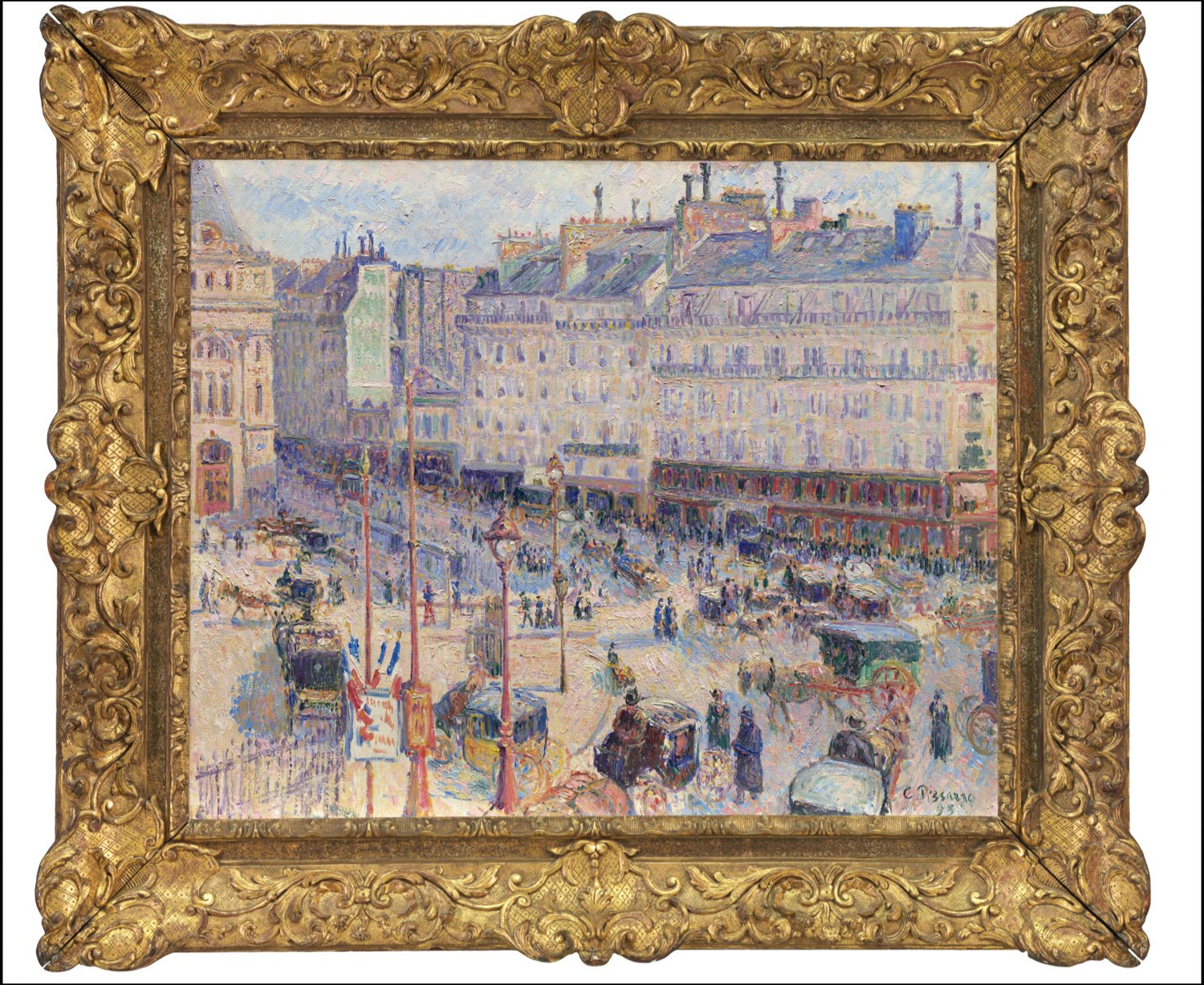CAMILLE PISSARRO

CAMILLE PISSARRO (1830–1903)
The Place du Havre, Paris, 1893, oil on canvas, 23-1/2 x 28-3/4 inches. Frame by Gill & Lagodich in an 18th-century French Louis XIV frame, gilded hand-carved wood, molding width 4-7/8 in. The museum has published extensively on this painting and frame, Pissarro Paintings and Works on Paper at the Art Institute of Chicago, with painting technical report and detailed frame description, Cat. 13. “After a period of experimentation with the Neo-Impressionist style developed by Georges Seurat, Camille Pissarro returned to the loose, multidirectional brushstrokes that he had used in his earlier Impressionist works. He also revisited an Impressionist subject that his colleagues had all but abandoned by the 1890s—the modern city. This bustling scene, alive with the noise and movement of traffic and pedestrians, was the view from his window at the Hôtel Garnier in Paris, where he stayed for a few weeks early in 1893. The building at the left edge of the canvas is the Gare Saint-Lazare.” —museum label

CAMILLE PISSARRO (1830–1903)
The Royal Palace at the Hermitage, Pontoise (Paysage a Pontoise), 1879, oil on canvas, 21-3/8 x 25-7/8 inches. Framed by Gill & Lagodich for the Virginia Museum of Fine Arts. Period 19th-century French Regence-style painting frame; gilded hand-carved wood; added patinated gesso on wood, flat-and-hollow liner; molding width 4 in. “Nicknamed the “Royal Palace,” the building partially depicted here is situated in L’Hermitage, a neighborhood in the northwestern Parisian suburb of Pontoise. In 1872, Pissarro settled in Pontoise, where over the next decade, he executed some of his most radical landscapes often while painting side by side with Paul Cézanne.”—VMFA label. Collection of Mr. and Mrs. Paul Mellon. Photo: David Stover.




CAMILLE PISSARRO (1830–1903)
The Climb, Rue de la Côte-du-Jalet, Pontoise (Chemin montant, rue de la Côte-du-Jalet, Pontoise), framed by Gill & Lagodich for the Brooklyn Museum. Custom-designed replica c. 1870s French frame, adapted Camille Pissarro design, gilded applied cast ornament laurel-and-berry motif top edge with banded corners and centers; stained wood stepped profile; patinated white gesso flat and hollow liner, molding width: 4-1/4” The process of designing this frame was covered in detail by The New Yorker magazine, March 27, 2006.
